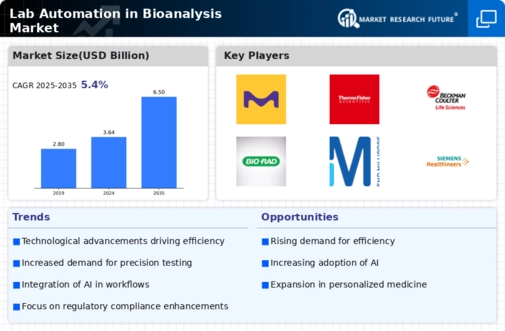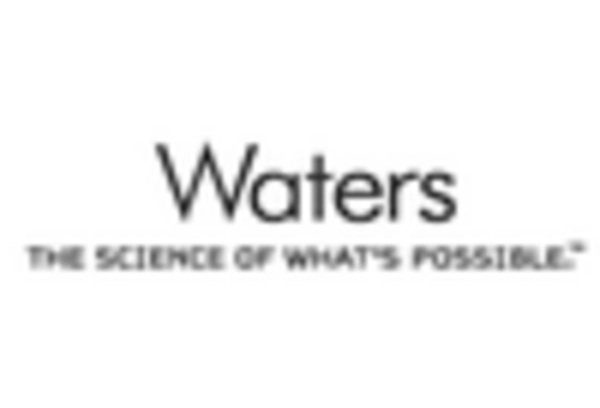Lab Automation In Bioanalysis Market Summary
As per MRFR analysis, the Lab Automation in Bioanalysis Market Size was estimated at 3.647 USD Billion in 2024. The Lab Automation in Bioanalysis industry is projected to grow from 3.844 USD Billion in 2025 to 6.504 USD Billion by 2035, exhibiting a compound annual growth rate (CAGR) of 5.4 during the forecast period 2025 - 2035.
Key Market Trends & Highlights
The Lab Automation in Bioanalysis Market is poised for substantial growth driven by technological advancements and evolving industry needs.
- The integration of Artificial Intelligence is transforming lab automation processes, enhancing efficiency and accuracy.
- Customization and flexibility in lab automation solutions are increasingly prioritized to meet diverse research requirements.
- Sustainability initiatives are gaining traction, reflecting a broader commitment to environmentally responsible practices in laboratory settings.
- Rising demand for high-throughput screening and advancements in robotics are key drivers propelling the market forward, particularly in North America and the Drug Discovery segment.
Market Size & Forecast
| 2024 Market Size | 3.647 (USD Billion) |
| 2035 Market Size | 6.504 (USD Billion) |
| CAGR (2025 - 2035) | 5.4% |
Major Players
Thermo Fisher Scientific (US), Agilent Technologies (US), PerkinElmer (US), Waters Corporation (US), Roche Diagnostics (CH), Siemens Healthineers (DE), Abbott Laboratories (US), Bio-Rad Laboratories (US), Danaher Corporation (US)

















Leave a Comment